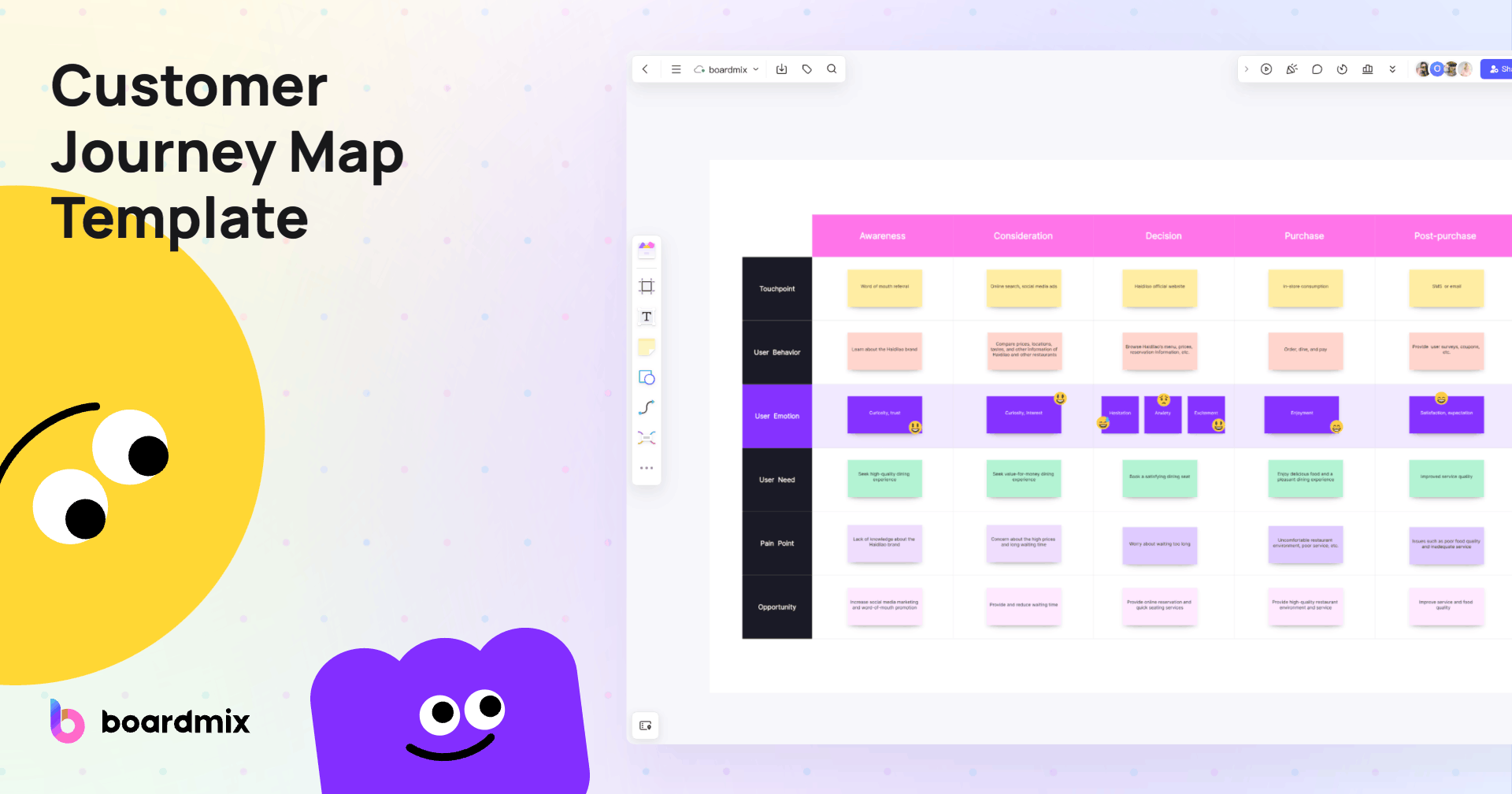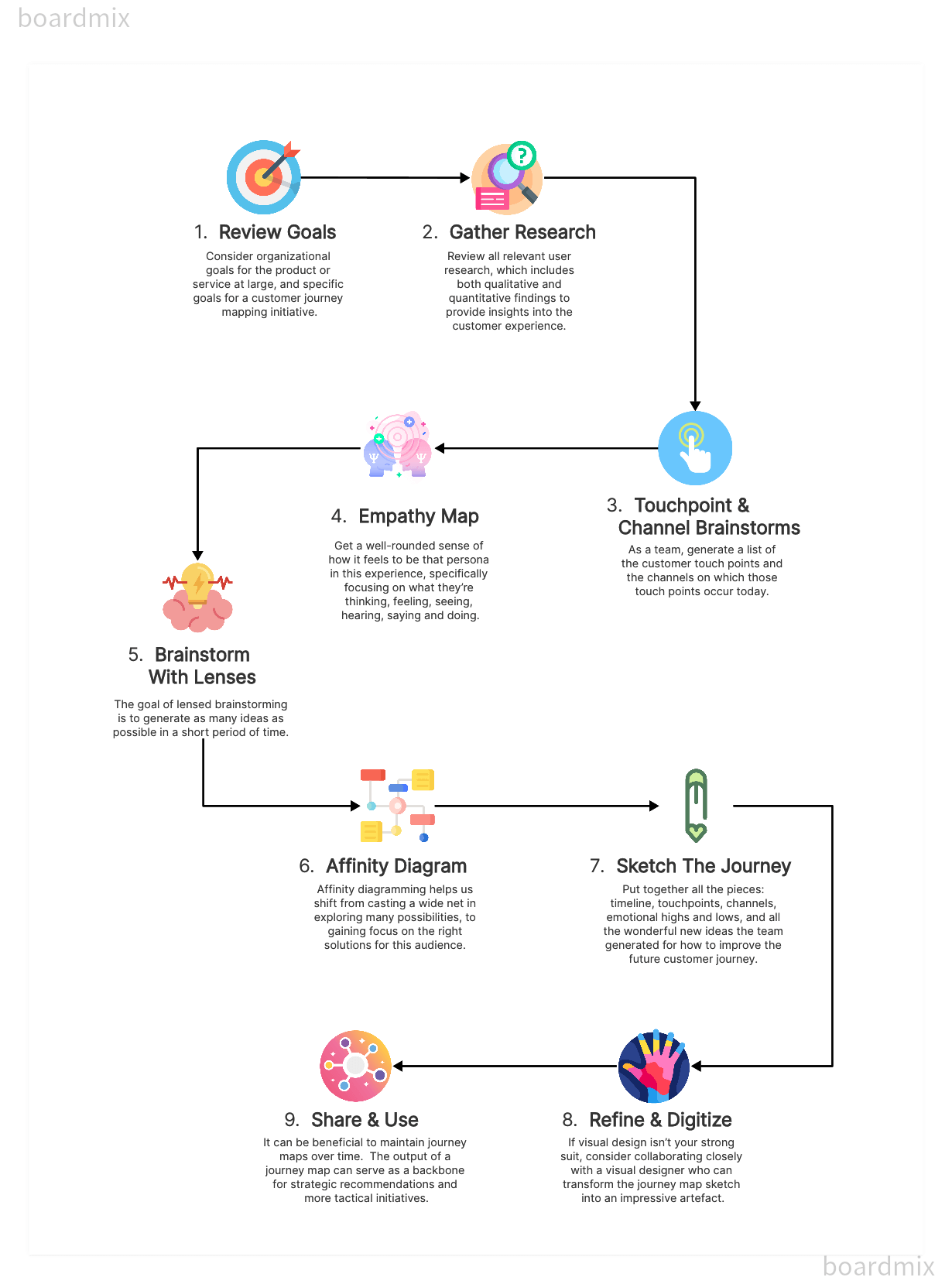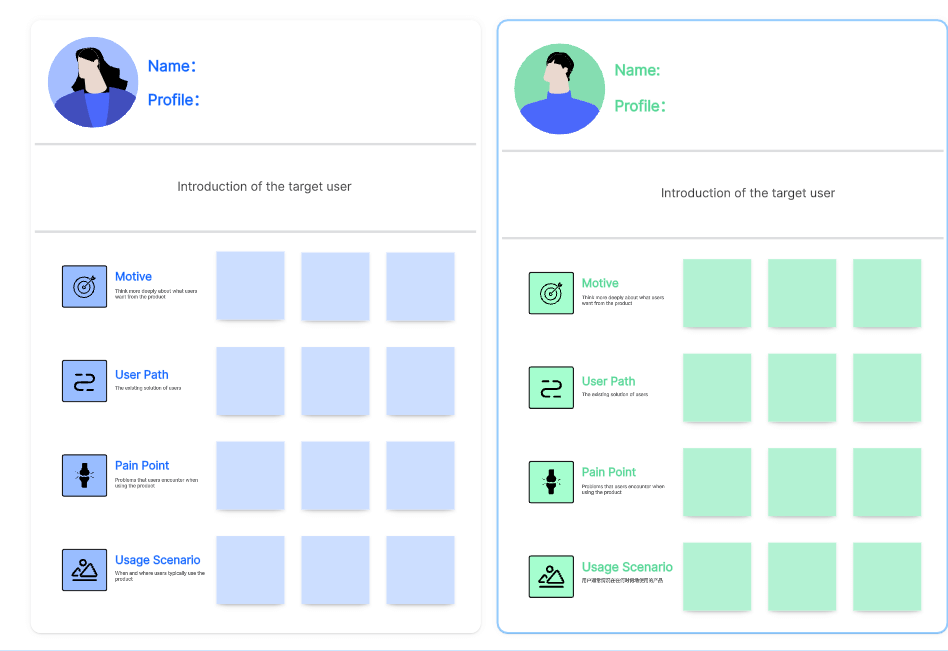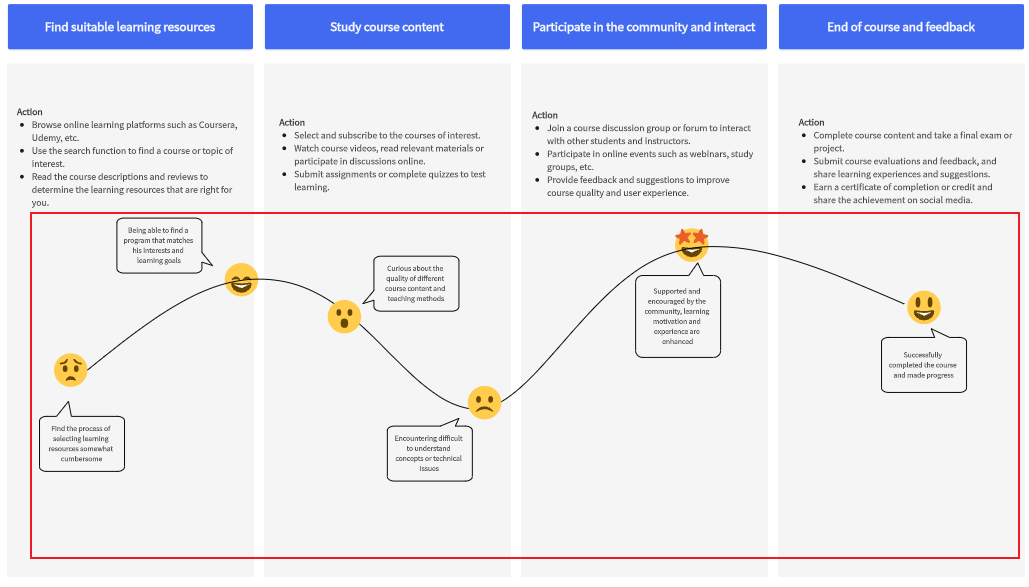The essence of operational planning is to create a strategy that focuses on users and aims to meet their needs. Typically, product managers analyze the user journey to understand the actions users take to achieve their goals. By optimizing system functionalities and task prioritization, they can enhance the user experience, leading to improved product retention and sustainable growth. This article will introduce user journey analysis with the help of Boardmix, an online collaborative whiteboard, and provide a detailed guide on how to create a user journey analysis diagram.

What is User Journey Analysis
User journey analysis refers to the process of operational teams through the collected data to analyze the behavior patterns and usage habits of user groups across various websites and platforms. The goal is to identify the most frequently used path patterns, saving time for acquiring potential users in the future and enhancing the potential for user growth.

However, it's important to note that data alone cannot convey the setbacks or surprises that customers encounter during their product experience. Therefore, understanding the following questions is crucial:
• What drives the needs of product users?
• What makes users hesitate to use the product?
Analyzing these questions will help us better understand the user experience. Storytelling is the simplest way to explain things, and user journey analysis is the best tool in business.
Advantages of User Journey Mapping
- Visual storytelling is fundamental to delivering a compelling narrative, and a clear and concise diagram is often more understandable than a detailed article. User journey mapping is a crucial aspect of analyzing the user journey, serving as a visualization tool that directly depicts the experience of human-computer interaction. By creating a visual map, project teams can conduct a clearer analysis of the user journey, effectively driving subsequent business collaboration. Below are several advantages of user journey mapping that help us better understand its significance:
- • Macroscopically examining the mental journey of users during their experience.
• Visually presenting user pain points to analyze the strengths and weaknesses of products/services at various stages.
• Gaining a deep understanding of user behavior to assist in user segmentation.
• Adjusting the information architecture from the map to further update the product and optimize the user experience.
How to Draw a User Journey
To conduct an effective user journey analysis, mastering the skill of creating a user journey map is indispensable. Using Boardmix, an online collaborative whiteboard, we will illustrate how to create a clear and concise user journey map through the case study of " Flight User Journey Analysis."
Step 1: Sketching User Portrait
Through surveys, interviews, and other research methods gather target usage data to analyze user behavior and create user portraits.

User portraits collect information centered on users, including their motivations, goals, personal characteristics/abilities, and specific usage scenarios, which is beneficial to establish a bridge between the operation team and users. Initially, the team can use Boardmix's online whiteboard to create user personas, leveraging its ready-made "User Portrait Template" available for free.
With Boardmix's voice and video conferencing function, team members can initiate brainstorming anytime, anywhere, and freely supplement collected user data using tags and comment functions. Additionally, Boardmix offers real-time saving and updating, along with various visualization tools such as images, hyperlinks, multi-dimensional tables, and icons. This enables team members to collaborate online simultaneously, breaking through time and space constraints.
Step 2: List User Behaviors
List the actual behaviors and steps that users must or may take at each stage.
Assuming that users use a ticketing app for business trips, vacations, or returning home, what factors do they consider when choosing to fly? Such as booking tickets in advance, taking the subway or bus to the airport, checking in luggage, printing boarding passes, queuing for security checks, waiting at the gate, boarding, and arriving. Outlining these user behaviors helps sketch out the basic framework of the user journey map.
Step 3: Clarify User Goals
Identifying user goals is a crucial part of analyzing the user journey. Simply knowing what users want to achieve is more efficient than guessing from multiple angles. Reflecting on each user's behavior and summarizing their changing needs at different stages, combine user goals and demands with operational objectives, which can maximize the product's potential for growth.
Step 4: Draw an Emotional Curve

User behaviors at different stages lead to varying emotions. For example, users may feel indecisive about choosing the most convenient station, unhappy about an unsatisfactory ticket, and a bad seat during online bookings. By assessing user behaviors at each stage, we can judge their psychological and emotional changes, and draw a potential emotional curve, which can gain a more intuitive understanding of the user's emotional journey.
Using the massive emoticons, sticker library, and other diverse icons in the Boardmix whiteboard can make the emotional curve more flexible and make it easier to intuitively feel the ups and downs of the user's mood in the journey.
Step5: Summarize the needs and opportunities in the journey
Organize the frustrations and surprises users experience during different stages of using the product. Summarize the pain points and satisfaction points at different stages, and combine the two to transform the pain points in the user journey into an opportunity to optimize the product.

For example, users may not be able to obtain optimal ticket purchasing information when purchasing tickets, may not know the baggage quota, and may not compare prices when purchasing tickets, which is a pain point for users during the journey. But it is both a pain point and an opportunity for operators because only when problems are solved timely can enhance user loyalty. Faced with the situation, the operations team can propose optimizing product services, updating product functions such as providing check-in procedures and risk warning guidelines for missed flights, providing consumer service suggestions and preferential activities, timely price comparison mechanisms to make ticket purchase information transparent, etc. Similar solutions cleverly resolve pain points in the user journey. Finally, a complete [Flight User Journey Analysis] diagram is completed!
Step6: Apply massive templates
If you don’t have any concepts and inspiration for drawing a user journey map, you might as well use the [User Journey Map] template in the Boardmix online whiteboard to draw it and add content to the existing template, which is convenient and reliable to improve work efficiency.

In addition, the template center has other work templates such as various mind maps, Scrum iteration meetings/review meetings/daily stand-up meetings, UML diagrams, SWOT analysis, user experience maps, cost-benefit analysis, and other templates. You only need to click on the browser to open the Boardmix whiteboard homepage, enter the workbench, and use templates for free.
In conclusion, user journey analysis is an important means to maximize potential users and retain users, and the Boardmix online collaboration whiteboard can make it easier to draw user journey maps and help teams better conduct user analysis. It provides smarter functions, richer scenarios, and more professional-level capabilities:
• Infinite canvas: Infinite canvas creation space, moves smoothly, and can be infinitely extended.
• Freely switch layouts and themes: Supports one-click setting or switching of mind map layout and theme style, more intuitive.
• Intelligent typesetting: Provides intelligent drawing functions such as automatic branch alignment, equal-spaced digital display, and automatic list layout.
• Online presentation of slides: Click the presentation button to present online, support page switching, and support free sorting.
• Multi-format import and export: Supports the import and export of multiple mainstream file formats such as PDF, PNG, and JPG, and can customize the export resolution, area, and background.
• Historical version management: Different versions can be created, and files can be traced back to any historical version at any time.
To enable multi-person collaboration on the same screen and efficiently complete user journey analysis, this multi-functional online collaboration whiteboard is an indispensable helper! Quickly get this perfect tool and collaborate online with your team members to unleash your creativity and imagination! It is now free for individual users, click Boardmix to use it immediately!













